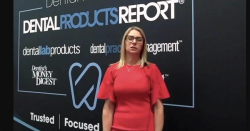- About Us
- Advertise
- Editorial
- Contact Us
- Terms and Conditions
- Privacy Policy
- Do Not Sell My Personal Information
© 2025 MJH Life Sciences™ and Dental Products Report. All rights reserved.
There Are Ways to Reduce Taxes to the Seller and Payer When a Dental Practice is Sold
In this month’s column, the author shares opportunities to secure an advantage to both the seller and the buyer.
Typically, when a dental practice is sold, the seller does whatever he or she can to affect a capital gain on the seller’s side of the ledger. When that occurs, the buyer then has created a situation where he or she has ordinary income from the principal payments that are allocated to the loan used to finance the acquisition of the dental practice. If this is the arrangement in the sales agreement negotiated by the parties, there is little that can be done to plan after the fact that the agreements have been signed.
Before the signatures have been put to paper, the advisors to the selling and buying dentists have time for using their experience and creativity to make some or all the taxes go away. The dental CPA, and sometimes the attorney, can arrange to have the documents include allocations to equipment, management services and other items that can assist the buyer in changing the long term write off, into a shorter term.
This type of amendment gives the buyer the ability to quicken the time of the write offs but it also takes away some of the seller’s capital gains treatment and forces him or her to report these items as ordinary income. That is going to make the seller unhappy. This jockeying for advantage to the buyer or seller takes place throughout the negotiations before the final agreement is put to paper.
Is there a method to secure an advantage to both the seller and the buyer?
The answer to the above question is that there is and the parties and their advisors may not have heard of this before the idea is offered to them. In the event the concept is beyond the expertise of their advisors, they should retain a dental financial expert who understands this.
It could mean thousands of dollars to each party to the transaction. It could also assist in securing the future of the buyer and seller as well as that of their heirs. An explanation follows in this paragraph, but the most important thing is that the advisors to the selling and buying dentist understand and if not, that they let their clients know that they need to hire an expert in these matters. Conceptually, the concept that is to be applied is that the seller and the buyer each achieve at first, an ordinary income and expense designation and not one of a capital gains format. Once this approach is achieved, the rest of the plan can be carried out to make each side of the transaction happy.
The following is the explanation that everyone has been waiting for that saves thousands of dollars for the seller and the buyer:
All the advisors and the selling and buying dentists need to understand qualified employer sponsored defined benefit plans in a summary form. This explanation should be able to be summarized by the advisors to the dentists. The power of this type of retirement plan is what will allow the idea of little or no tax to be implemented. The way the defined benefit plan works is that it defers thousands of dollars, that are tax deductible to the employer, into an employer sponsored qualified retirement account. The theory of writing off thousands of dollars each year by the buyer and having the seller defer the reporting of the income is what will be described. The thought of the seller reporting little or no income for years and the buyer writing off those amounts is the purpose of the implementation of the defined benefit plan. It works in the following manner and the older the buyer or seller is, the better off it is for the purpose of increasing the deductible amount to the buyer and deferring more to the seller.
A defined contribution plan such as a 401k, is regulated as to the maximum allowed as a deduction based on congressional action. The defined benefit plan contribution has almost no limit as to the maximum deduction based on the formula written into the plan. Part of its formula is based on age, compensation and the number of years of service. The method to deduct the payments as if they were for the acquisition of the practice is to employ the seller at a modest salary. Then allow the defined benefit formula to kick in to let the employer receive the large deductible contribution benefits. Instead of reporting the sale proceeds and immediately paying a federal and state tax of up to 35% or more in some states, the payments for the defined benefit plan will go into a tax deferred retirement plan. An example of the results of what this means follows in the next paragraph.
Comparisons of an outright sale for cash compared to the use of a defined benefit plan and its use:
Using a hypothetical example of a sale for $1,000,000 and the seller receiving capital gains treatment in a high state income tax environment, the following would occur. The seller receives the $1,000,000 and the assumption is that he or she has withdrawn all the profits over the years as most dentists do. With a zero basis, the seller will pay federal and state taxes of approximately $350,000 leaving $650,000 for him or her to live off and to invest. Using a simple 5% return and not touching the principal, the seller would have $32,500 a year as income not counting anything else and would pay a tax of about $5,000. ($32,500 minus $5,000 would leave $27,500, which would be spent).
If the defined benefit plan was to be adopted by the employer, on a $50,000 salary to the seller and a federal and state tax of 35% or, $17,500, leaving $32,500 which would be spent. No investments would be made since about $200,000 per year would be deducted from the employer’s income and paid into the retirement plan. At a 5% deferred taxable income in the retirement plan, it would have $210,000 at the end of year one. At the end of year four there would be approximately $900,000 in the retirement plan plus the net of $32,500 each year to spend for 4 years, or an additional $130,000. There are plenty of questions to be discussed with the dental advisors but those knowledgeable with defined benefit plans can massage the amounts based on actual ages and the formula for retirement so that hypotheticals need not be used. The funds are not taxable until withdrawn. They are also immune from creditors. If the money is needed, based on current laws, it can be withdrawn based on the principal’s age, without penalty.
For more columns from the author, visit https://www.dentalproductsreport.com/practice-management.



